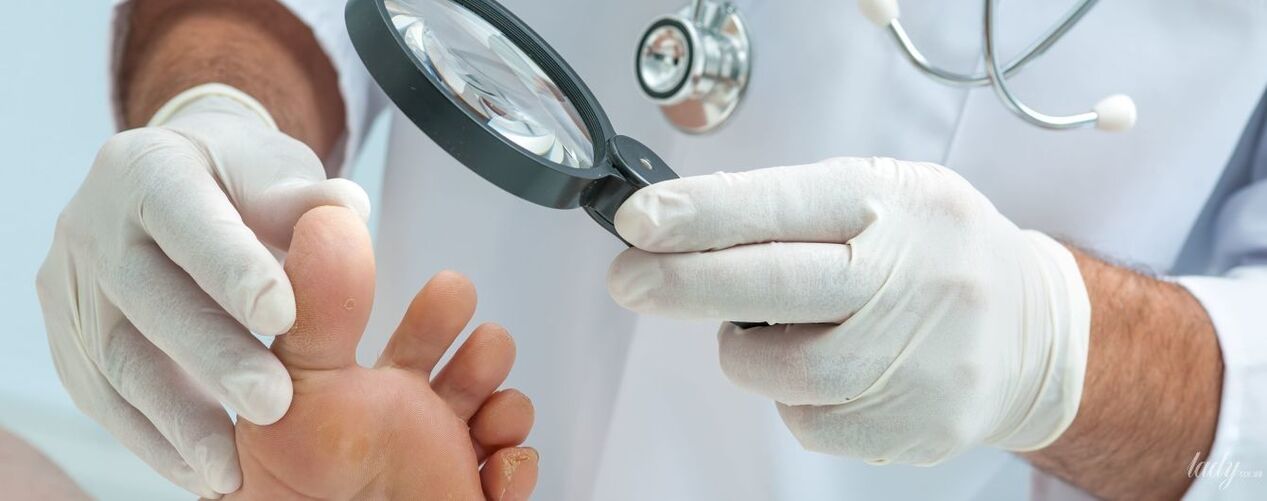Fungal infections on nail plates are about half of all nail diseases, and are very common in modern society.

In most cases, Onychomycisois affects the nail plate on the legs, so the disease is not immediately noticed, but is in the obvious symptom stage.This is an infectious disease that not only produces cosmetic defects, but can also be manifested through invasion of the immune system and even the digestive tract.Nail fungi cannot be underestimated and their treatment should be carried out promptly under the control of experienced doctors.
Causes of fungal infection
The causes of nail plate infection are usually caused by three types of mushrooms: skin plants, yeast-like mushrooms and molds.In most cases, in moderate climates, dinoflavodia is caused by fungal microorganisms (Trichophyte Red) of phospholipids - accounting for 70% of fungal and phytophyte plants (trichophyton of inter-down) - 20% of diagnosis.
When wearing someone else’s socks or even during pedicure sessions, you may get infected in common places like swimming pools, saunas, bathrooms, etc.
Furthermore, due to various diseases, some people are prone to using this disease.In such pathology, the immunosuppressive status is associated with immunosuppressants after HIV infection or organ transplantation or certain autoimmune diseases.
Although untreated thyroid disease is an infectious disease, most patients do not recognize their changes in nail pathology, so they usually seek medical help in advanced cases.By the way, ignoring this disease can lead to loss of nails and spread to adjacent skin.
How the disease manifests
Most commonly, infection develops with the first and/or fifth index of the foot (if the change affects all nails, which is usually a symptom of another disease, such as psoriasis).First, the change affects the edges of the nails, which changes the natural color to a pale yellowish brown.After the nail plate, it becomes fragile and fragile, and over time it changes shape and becomes thicker.
The most characteristic symptoms of nail fungal infection include:
- Change the color of your nails to yellow, brown, white or black;
- The development of thickening of the nail plate and its increased vulnerability;
- deformation of the plate and its separation from the nail bed;
- an unpleasant smell from infected nails;
- The inflammation process around the nail forms.
In the later stages of the disease, obvious pain in the nails may develop and even make it difficult to walk.
Prevent and treat nail fungi
Oncology should be treated as soon as possible, as infection tends to extend to other nails.Additionally, advanced disease can cause damage to the entire nail plate and must be removed later.
Before prescribing treatment, the doctor will surely prescribe a lab analysis that will determine the type of fungus, the degree of damage and select the most effective treatment.The analysis included the capture of material from the affected nail plate and its studies under a microscope.
What are the treatments for myelopathy?The method and duration of infection therapy depends on many factors, including the severity of nail lesions, the pathogen and the type of related pathology.
Treatment of fungal nail infections usually begins with the use of topical medications in the form of varnish, lotions, or face creams that can handle the disease well in the early stages.If these changes affect multiple plates, they will occur for a long time, and the topical drug is supplemented with oral administration by antifungal drugs.Doctors can prescribe medications based on itraconazole or fluconazole.
If patients with persistent cancer do not receive medication or continue to relapse, doctors recommend removing the infected nail plate to eliminate the source of the infection.
Please note that Onychomycisois is a frequently recurring infectious disease, so you should follow important preventive rules:
- Don't walk barefoot in the swimming pool, gym;
- Pedicure in salons with high-quality equipment disinfection;
- Monitor the cleanliness of shoes;
- Wash your feet regularly;
- Cope with early symptoms, such as changes in the color of the nail plate.
attention!The source of reinfection of fungal infection is shoes, so it is recommended to throw it away or throw it away in a special way, which means doctors will talk about it.

























